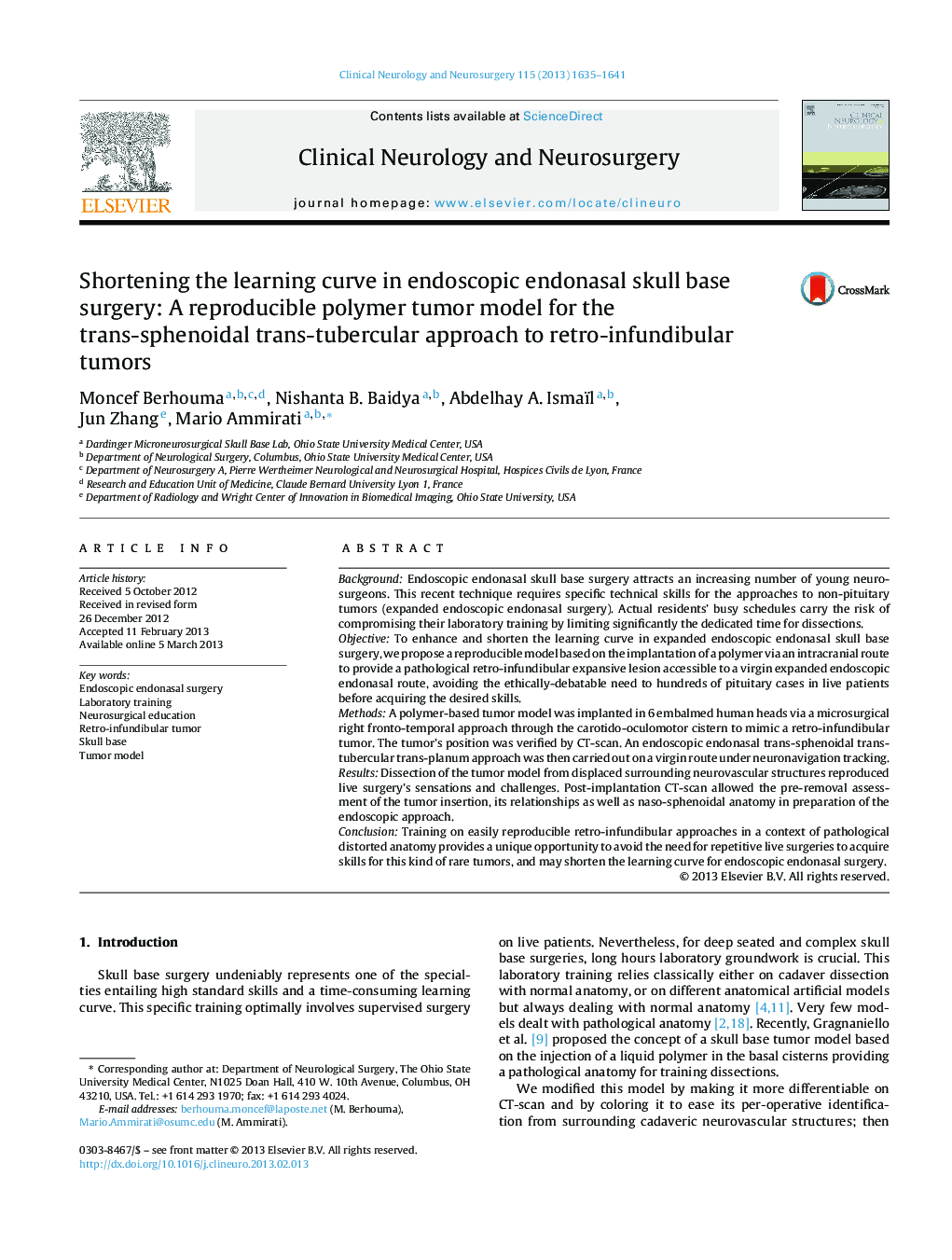| کد مقاله | کد نشریه | سال انتشار | مقاله انگلیسی | نسخه تمام متن |
|---|---|---|---|---|
| 3040474 | 1184739 | 2013 | 7 صفحه PDF | دانلود رایگان |

BackgroundEndoscopic endonasal skull base surgery attracts an increasing number of young neurosurgeons. This recent technique requires specific technical skills for the approaches to non-pituitary tumors (expanded endoscopic endonasal surgery). Actual residents’ busy schedules carry the risk of compromising their laboratory training by limiting significantly the dedicated time for dissections.ObjectiveTo enhance and shorten the learning curve in expanded endoscopic endonasal skull base surgery, we propose a reproducible model based on the implantation of a polymer via an intracranial route to provide a pathological retro-infundibular expansive lesion accessible to a virgin expanded endoscopic endonasal route, avoiding the ethically-debatable need to hundreds of pituitary cases in live patients before acquiring the desired skills.MethodsA polymer-based tumor model was implanted in 6 embalmed human heads via a microsurgical right fronto-temporal approach through the carotido-oculomotor cistern to mimic a retro-infundibular tumor. The tumor's position was verified by CT-scan. An endoscopic endonasal trans-sphenoidal trans-tubercular trans-planum approach was then carried out on a virgin route under neuronavigation tracking.ResultsDissection of the tumor model from displaced surrounding neurovascular structures reproduced live surgery's sensations and challenges. Post-implantation CT-scan allowed the pre-removal assessment of the tumor insertion, its relationships as well as naso-sphenoidal anatomy in preparation of the endoscopic approach.ConclusionTraining on easily reproducible retro-infundibular approaches in a context of pathological distorted anatomy provides a unique opportunity to avoid the need for repetitive live surgeries to acquire skills for this kind of rare tumors, and may shorten the learning curve for endoscopic endonasal surgery.
Journal: Clinical Neurology and Neurosurgery - Volume 115, Issue 9, September 2013, Pages 1635–1641